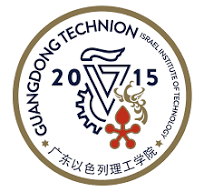
In the early days of nonlinear optics (NLO), symmetries were used to derive a set of rules for nonlinear photonic processes according to the medium’s symmetries that are reflected in the NLO coefficient tensor [1]. While this approach was believed to be complete and closed, the field of symmetries and selection rules in NLO has recently reignited as multi-color ultrashort laser pulses with tailored polarization and spatiotemporal structures become standard drivers of NLO processes. We develop a more complete theory which incorporates all possible dynamical degrees of freedom of light: spin and orbital angular momentum, spatial structure, time-dependent polarization, temporal envelope, etc., in addition to the symmetries of the medium [2,3]. This formalism already resulted with many new selection rules in nonlinear optics [2-5], schemes for very efficient chiral discrimination based on only electric dipole interaction [6-8], definition of a new symmetry-based measure for light’s chirality (analogous to the molecular definition) [9,10], and all-optical method for diagnostics of ultrafast ring currents, e.g. in gas of atoms and molecules [11].
We also discovered that a symmetry breaking imposes selection rules on the symmetry-broken system, which manifest as scaling laws of selection rule deviations. We term these rules 'selection rules for breaking selection rules' [12] and showed that they can be derived from symmetries in real and synthetic dimensions of the symmetry-broken system [13-15].
- Nonlinear optics, Boyd, Elsevier; 2003
- O. Neufeld, D. Podolsky and O. Cohen, Floquet group theory and its application to selection rules in harmonic generation, Nat. Commun., 10, 405 (2019)
- G. Lerner, O. Neufeld, L. Hareli, G. Shoulga, E. Bordo, A. Fleischer, D. Podolsky, A. Bahabad and O. Cohen, Multi-scale dynamical symmetries and selection rules in nonlinear optics, Science Advances, 9, eade0953 (2023)
- O. Neufeld, E.Bordo, A. Fleischer and O. Cohen, High harmonic generation with fully tunable polarization by train of linearly-polarized pulses, New Journal of Physics, 19, 023051 (2017)
- O. Neufeld, E. Bordo, A. Fleischer and O. Cohen, High Harmonics with Controllable Polarization by a Burst of Linearly-Polarized Driver Pulses, Photonics, 4, 31 (2017)
- D. Ayuso*, O. Neufeld*, A. Ordonez, P. Decleva, G. Lerner, O. Cohen, M. Ivanov and O. Smirnova, Synthetic chiral light for efficient control of chiral light matter interaction, Nature Photonics, 13 866 (2019)
- O. Neufeld*, D. Ayuso*, P. Decleva, M. Ivanov, O. Smirnova and O. Cohen, ultrasensitive chiral spectroscopy by dynamical symmetry breaking in high harmonic generation, Phys. Rev. X 9, 031002 (2019)
- O. Neufeld, O. Wengrowicz, O. Peleg, Angel Rubio and O. Cohen, Detecting multiple chirality centers in chiral molecules with high harmonic generation, Opt. Express, 30, 3729 (2022)
- O. Neufeld, M. Even-Tzur and O. Cohen, Degree of chirality (DOC) of Electromagnetic fields and maximally chiral light , Phys. Rev. A101, 053831 (2020)
- O. Neufeld and O. Cohen, Unambiguous definition of handedness for locally chiral light, Phys. Rev. A, 105, 023514 (2022)
- O. Neufeld and O. Cohen, Background-Free Measurement of Ring Currents by Symmetry Breaking High Harmonic Spectroscopy, Phys. Rev. Lett 123, 103202 (2019). Highlighted as Editors’ suggestion
- M. Even-Tzur, O. Neufeld, A. Fleischer and O. Cohen, Selection rules for breaking selection rules, New J. Phys., 23, 103039 (2021)
- M. Even-Tzur, O. Neufeld, E. Bordo, A. Fleischer, and O. Cohen, Selection rules in symmetry broken systems by symmetries in synthetic dimensions, Nature Communications, 13, 1312 (2022)
- Ayelet J. Uzan-Narovlansky, Gal Orenstein, Sergei Shames, Matan Even Tzur, Omer Kneller, Barry D. Bruner, Talya Arusi-Parpar, Oren Cohen and Nirit Dudovich, Revealing the interplay between strong field selection rules and crystal symmetries, Rev. Lett. 131, 223802 (2023)
- Michael Feldman, Matan Even Tzur and Oren Cohen, Selection rules of linear and nonlinear polarization-selective absorption in optically dressed matter, Photonics, 11, 918 (2024)
- Ofer Neufeld, Matan Even Tzur, Ofer Kfir, Avner Fleischer and Oren Cohen, Light symmetry, asymmetry, and their role in nonlinear optics and ultrafast phenomena, http://arxiv.org/abs/2503.19433


